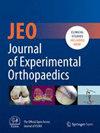Magnetic resonance imaging offers advantages over computer tomography for measurement of the shoulder stability ratio
Abstract
Purpose
Recent studies indicate that bony shoulder stability ratio (BSSR) is a useful parameter for estimating glenohumeral stability provided by concavity-compression. In cases of bony glenoid defects, the BSSR may help to optimise surgical decision-making. However, the shapes of cartilage and labrum differ from the subchondral bony concavity. The aim of this study was to investigate the influence of cartilage and labrum on glenoid concavity and glenohumeral stability.
Methods
Ten cadaveric shoulders were examined by computer tomography (CT) and magnetic resonance imaging (MRI). Thereby radius, depth and stability ratio in anterior-posterior and superior-inferior directions were measured. MRI measurements were performed once including and once excluding the labrum. From these, BSSR, osteochondral shoulder stability ratio (OSSR) and fibrocartilaginous shoulder stability ratio (FCSSR) were calculated, and correlations were investigated to assess the transferability between imaging modalities.
Results
CT and MRI did not provide comparable results due to the influence of cartilage and labrum. The FCSSR showed a significantly higher stability ratio than BSSR in anterior-posterior and the same tendency in superior-inferior direction. OSSR and BSSR did not differ significantly. The labrum contributed to a significantly higher depth and lower radius in the anterior-posterior direction. Cartilage alone led to a significantly lower radius in both directions, without significant differences in depth. Comparison of CT and MRI measurements showed only weak correlations.
Conclusion
Labrum and cartilage lead to an increased depth and decreased radius, resulting in a higher glenoid concavity and, consequently, a higher stability ratio. Comparing FCSSR and BSSR, the influence of labrum and cartilage led to a 25% higher stability ratio in anterior-posterior direction and a 7.7% higher stability ratio in superior-inferior direction. By finding no significant differences between bony and osteochondral stability ratios, the labrum of the glenoid appears to be the major factor for the increase in stability ratio. Moreover, CT and MRI measurements showed no transferability.
Level of Evidence
Level II, diagnostic study.





 求助内容:
求助内容: 应助结果提醒方式:
应助结果提醒方式:


